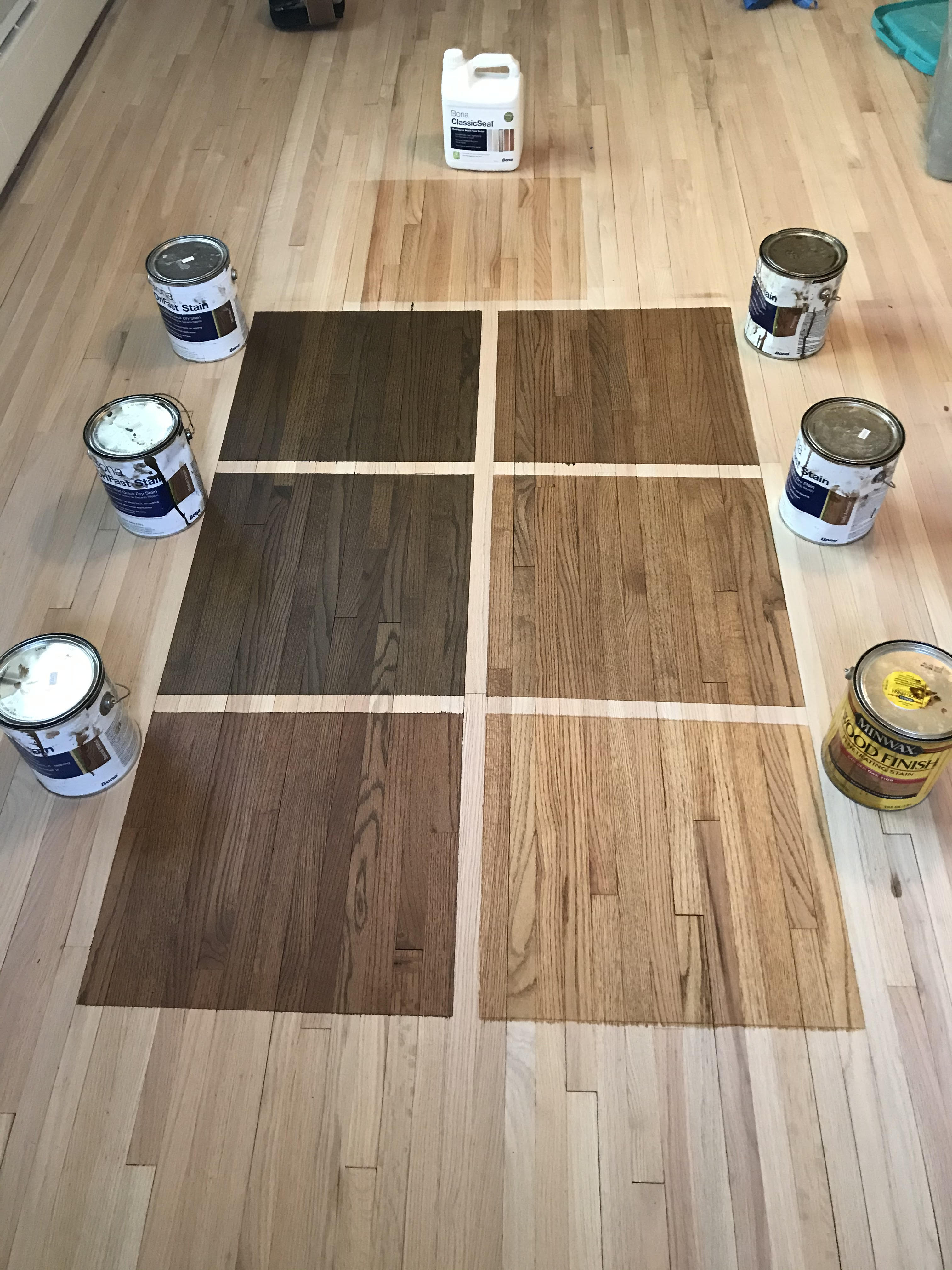Imagine stepping into your home, greeted by the warm, inviting glow of beautiful hardwood floors. You run your hand along the smooth, even surface, appreciating its natural beauty and timeless charm. But what if those floors, once a source of pride, start to show their age? Scratches, dents, and faded finishes can mar their appearance and diminish your home’s aesthetic appeal. This is where a common question arises: can you sand down engineered hardwood floors? The answer, like many things in the world of home improvement, isn’t a simple yes or no. This guide will delve into the nuances of engineered hardwood and explore the viability of sanding to restore their shine.

Image: mromavolley.com
Engineered hardwood, a popular choice for flooring, offers durability and practicality. Composed of layers, with a top layer of real wood veneer, it provides the natural look and feel of solid hardwood while being more stable and resistant to warping. But while engineered floors offer many benefits, they also present unique considerations when it comes to refinishing. Understanding those nuances is crucial for homeowners seeking to restore the beauty of their floors.
The Anatomy of Engineered Hardwood: Understanding the Layers
Engineered hardwood floors are constructed in a multi-layered manner, each layer playing a crucial role in the floor’s performance. The top layer, the veneer, provides the aesthetic appeal, showcasing the unique grain patterns and colors that define hardwood. This layer is typically thinner than solid hardwood, making it less forgiving when it comes to sanding.
Beneath the veneer lies a core layer, usually composed of plywood or high-density fiberboard (HDF), for added stability. This layer provides structural support and prevents warping or cupping that can occur with solid hardwood. The core is a critical element in engineered hardwood, influencing its durability and suitability for different applications.
Lastly, a bottom layer, often a balancing layer, is integrated to ensure consistent thickness and prevent warping. This layer is often made of less expensive wood, contributing to the cost-effectiveness of engineered hardwood compared to solid hardwood.
Can You Sand Down Engineered Hardwood? A Closer Look
The question of whether you can sand engineered hardwood floors hinges on the thickness of the veneer layer. The key is to ensure that sanding doesn’t penetrate beyond the veneer, damaging the core layer and compromising the overall integrity of the floor.
Here’s a breakdown:
- Thickness matters: The veneer layer on most engineered hardwood floors is typically between 1/16 inch and 1/8 inch thick. If the veneer layer is thick enough, you may be able to sand it down one or maybe even two layers to remove scratches and refinish the wood.
- Manufacturer’s recommendations: It’s crucial to consult the manufacturer’s instructions for your specific engineered hardwood floor. They may have specific guidelines related to sanding and refinishing.
- Consider the number of sanding layers: You can only sand down engineered hardwood floors for a limited number of times. Each sanding session removes a portion of the veneer, and there is a point where the veneer becomes too thin, making further sanding impractical and potentially damaging.
Factors to Consider Before Sanding
Before embarking on a sanding project, it’s essential to assess a few important factors:
- Severity of the damage: For minor surface scratches or blemishes, sanding may be a viable option. However, if the damage is extensive, involving deep gouges or substantial wear and tear, sanding might not be the best approach.
- Wear layer thickness: As mentioned earlier, the thickness of the veneer layer is crucial to determine if sanding is feasible. If the veneer layer is too thin, sanding may damage the core layer.
- Floor structure: Some engineered hardwood floors have a specific structure that may make sanding challenging or unsuitable. For instance, floors with a thin veneer layer or a unique installation process may require special consideration.
- Professional assessment: For complex floor conditions or concerns regarding suitability for sanding, a professional flooring expert can provide valuable insights and guidance.

Image: clsa.us
Potential Pitfalls to Avoid
While sanding can rejuvenate engineered hardwood floors, it comes with certain risks and limitations. It’s important to be aware of potential pitfalls to avoid costly mistakes and ensure a successful outcome:
- Over-sanding: Exceeding the recommended sanding depth can damage the core layer, compromising the integrity of the floor.
- Uneven sanding: Uneven sanding can result in a patchwork floor with uneven surface levels.
- Improper finishing: The final finish should be applied carefully and evenly to ensure a smooth, durable surface.
Alternatives to Sanding
If sanding isn’t a viable option, there are alternative methods to restore the beauty of your engineered hardwood floors:
- Repairing scratches and dents: Minor scratches and dents can be repaired using wood fillers or special products designed for touch-ups.
- Refinishing with a stain or varnish: Applying a new coat of stain or varnish can refresh the surface and make it look new again.
- Replacing damaged boards: If a significant portion of the floor is damaged, replacing individual boards might be necessary.
Can You Sand Down Engineered Hardwood Floors
Conclusion: A Thoughtful Approach to Refinishing
When it comes to engineered hardwood flooring, the decision to sand should be a thoughtful one. While sanding can restore the beauty of these floors, it’s crucial to consider the veneer layer thickness, potential damage, and alternative methods.
Always consult with a professional flooring expert or the manufacturer’s guidelines before embarking on any sanding project. Remember, maintaining the integrity of your engineered hardwood floors will save you time, effort, and potentially costly repairs in the long run.






